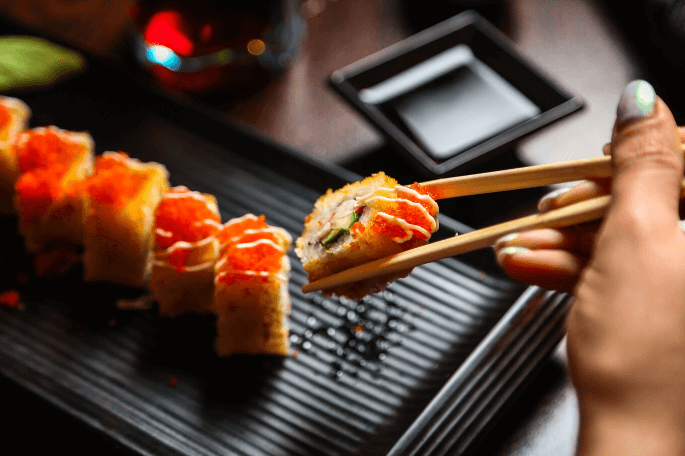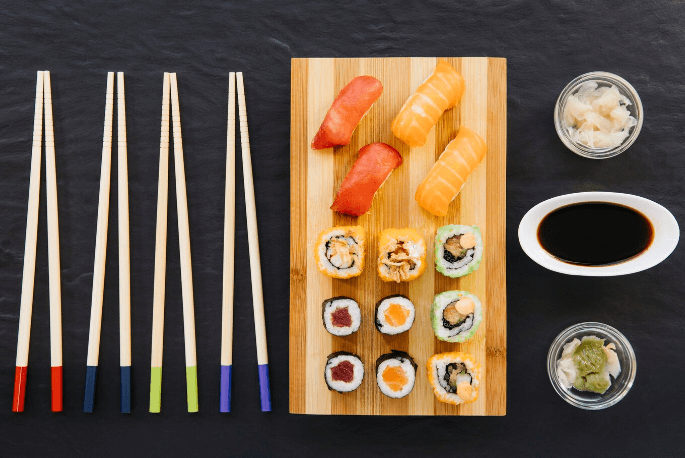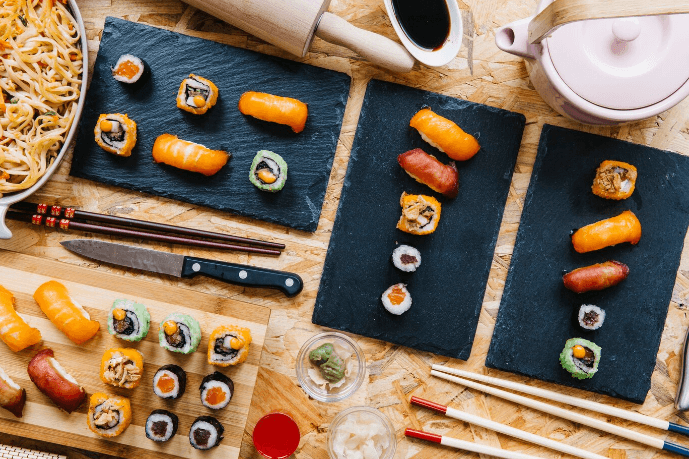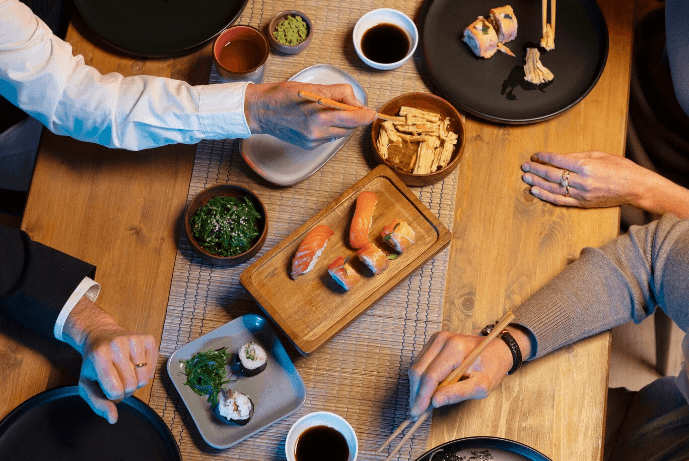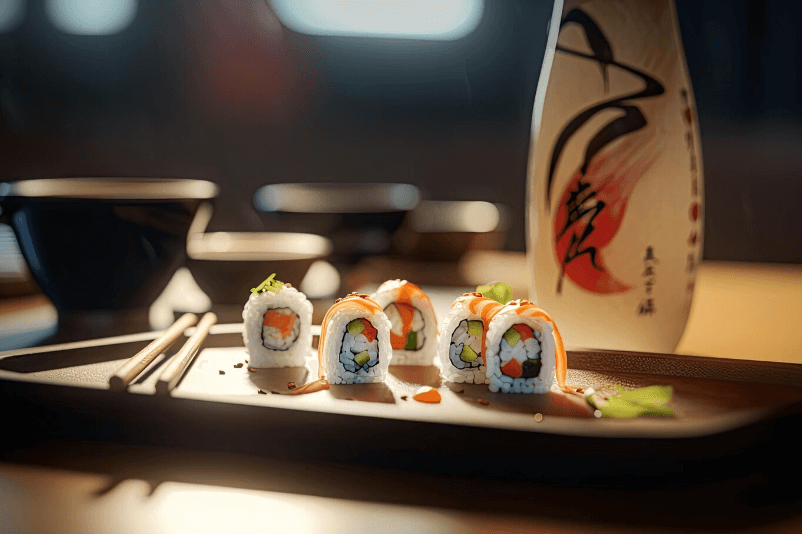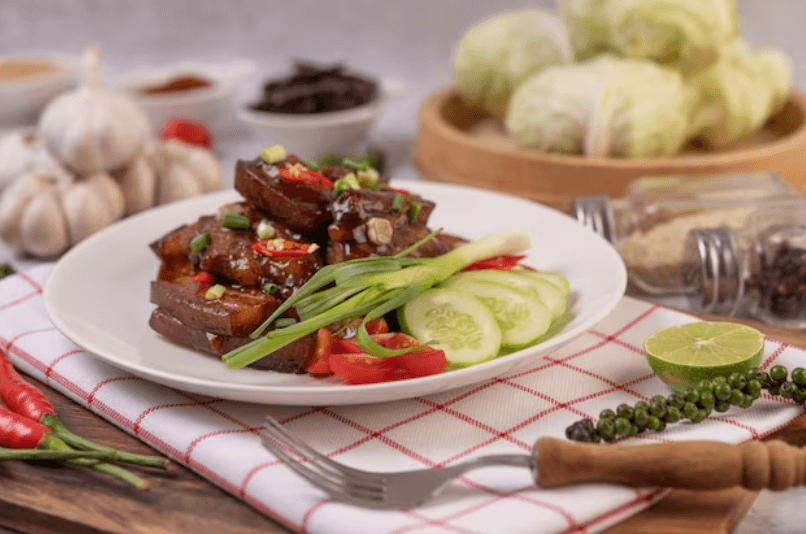Tripe in Pho – Exploring the Richness of a Traditional Vietnamese Dish
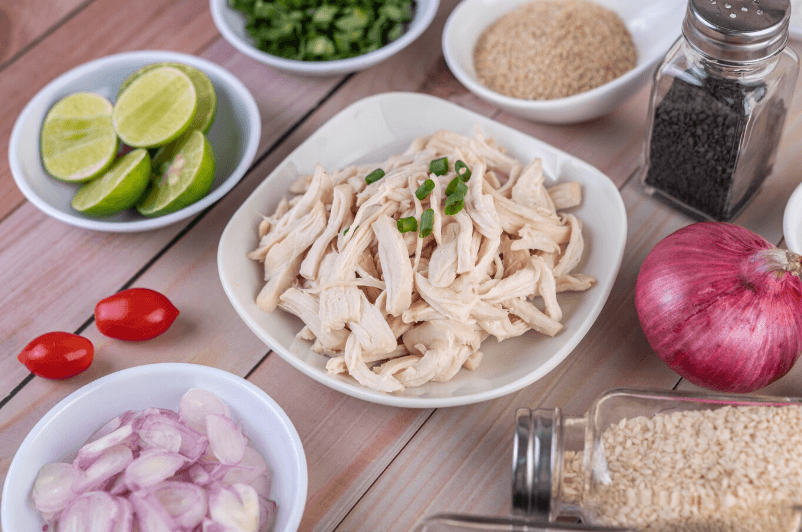
Pho, a beloved Vietnamese dish, is known for its flavorful broth and tender noodles. But did you know that one of the key ingredients that gives pho its unique taste and texture is tripe?
Tripe, made from the lining of a cow’s stomach, is a staple ingredient in many Vietnamese dishes, including pho. Its chewy texture and mild flavor add an extra layer of depth to the broth, creating a truly authentic and satisfying bowl of pho.
When cooked in the pho broth, the tripe absorbs the aromatic spices and savory flavors, transforming it into a melt-in-your-mouth delicacy. Its rich collagen content also gives the broth a velvety smoothness, making every spoonful a comforting and nourishing experience.
So, if you’re looking to experience the true taste of Vietnamese pho, don’t miss out on the traditional ingredient that is tripe. Whether you’re a pho enthusiast or a curious foodie, give it a try and discover the authentic flavors of Vietnam!
Traditional Vietnamese Ingredient
Vietnamese cuisine is known for its rich and diverse flavors, and one of the key ingredients that adds a unique taste and texture to many Vietnamese dishes is tripe.
Tripe, or the lining of the cow’s stomach, has been a staple in Vietnamese cooking for centuries. Its usage dates back to the early days of Vietnamese cuisine, where every part of the animal was utilized to create delicious and nourishing meals.
Tripe is often used in the popular Vietnamese dish called Pho, a flavorful noodle soup that is enjoyed by people all over the world. The tripe is simmered for hours in a fragrant broth, allowing it to absorb the flavors and become tender and flavorful.
Not only does tripe add a unique texture to the dish, but it is also packed with nutrients. It is a great source of protein, vitamins, and minerals, making it a healthy addition to any meal.
Many Vietnamese people believe that tripe has medicinal properties and can aid in digestion and strengthen the immune system. It is often consumed during the colder months to warm the body and boost overall health.
So, if you’re looking to experience the true flavors of Vietnamese cuisine, be sure to try dishes that feature tripe as a traditional Vietnamese ingredient. The combination of its unique taste, texture, and nutritional benefits will surely leave you satisfied and wanting more.
Rich History and Cultural Significance
The Vietnamese cuisine is known for its diverse flavors and use of fresh ingredients. One of the most beloved and traditional dishes in Vietnamese cuisine is Pho, a delicious soup that has gained popularity worldwide.
Pho is made with a delicate beef or chicken broth, rice noodles, and a variety of meats and herbs. One of the key ingredients that adds depth and richness to Pho is tripe, a traditional Vietnamese ingredient.
Tripe, also known as beef stomach, is a unique and flavorful addition to Pho. It has a slightly chewy texture and absorbs the flavors of the broth, creating a harmonious blend of taste and texture.
Tripe has a long history and cultural significance in Vietnamese cuisine. It is believed to have originated in Northern Vietnam, where it was used as a way to make use of every part of the animal. In Vietnamese culture, tripe is considered a delicacy and is often served during special occasions and festive gatherings.
In addition to its cultural significance, tripe is known for its health benefits. It is a good source of protein, vitamins, and minerals, and is low in fat. It also contains collagen, which is great for maintaining healthy skin, hair, and joints.
Whether you’re a fan of traditional Vietnamese cuisine or looking to explore new flavors, adding tripe to your Pho is a great way to experience the rich history and cultural significance of this beloved dish.
Versatile Use in Vietnamese Cuisine
The traditional Vietnamese ingredient, tripe, is known for its versatility and unique flavor. Tripe, which is the lining of the cow’s stomach, has been an integral part of Vietnamese cuisine for centuries.
In Vietnamese cuisine, tripe is used in various dishes, adding its distinct taste and texture to enhance the overall flavor. One popular dish is “Bo Bia,” a spring roll that combines tripe with other ingredients such as jicama, carrots, and herbs, wrapped in rice paper and served with a tangy dipping sauce.
Another famous Vietnamese dish that features tripe is “Bun Rieu,” a savory noodle soup made with tomato-based broth and topped with pork, shrimp, tofu, and of course, tripe. The combination of flavors creates a harmonious and satisfying taste.
Tripe is used as a filling for “Banh Xeo,” a Vietnamese pancake made with rice flour and turmeric, creating a crispy shell filled with a delicious mixture of tripe, bean sprouts, and shrimp. It is served with fresh herbs and a sweet and sour fish sauce.
Additionally, tripe is a key ingredient in “Bun Bo Hue,” a spicy and flavorful beef noodle soup originating from the city of Hue. The tripe adds a unique texture to the soup, complementing the tender beef and fragrant lemongrass.
In Vietnamese cuisine, tripe is not only used in soups and rolls but also stir-fried with vegetables and spices, creating a hearty and delicious dish. Its versatility allows it to be used in various cooking methods, making it a staple ingredient in many traditional Vietnamese recipes.
Whether it’s in a soup, a noodle dish, or a stir-fry, tripe adds depth and complexity to Vietnamese cuisine. Its unique texture and flavor make it an essential ingredient for those seeking an authentic Vietnamese dining experience.
| Traditional Vietnamese Dishes Featuring Tripe |
|---|
| Bo Bia |
| Bun Rieu |
| Banh Xeo |
| Bun Bo Hue |
Health Benefits of Tripe
Tripe, a traditional ingredient in Vietnamese pho, offers a range of health benefits. Here are some of the reasons why including tripe in your diet can be beneficial for your health:
- Rich in Protein: Tripe is an excellent source of protein, which is essential for building and repairing body tissues. Including tripe in your diet can help promote muscle growth and development.
- Nutrient-Dense: Tripe is packed with essential nutrients, including vitamins and minerals like iron, zinc, and vitamin B12. These nutrients play a vital role in maintaining overall health and well-being.
- Digestive Health: Tripe contains a significant amount of dietary fiber, which is beneficial for digestive health. Fiber helps promote regular bowel movements and prevents constipation.
- Low in Fat: Tripe is a lean source of meat that is low in fat. This makes it a healthier option compared to other types of meat, as a diet high in saturated fat can increase the risk of heart disease and other health problems.
- Supports Immune Function: Tripe contains immune-boosting nutrients like zinc and vitamin B12, which play a crucial role in supporting a healthy immune system.
Incorporating tripe into your diet can be a flavorful way to reap these health benefits. Whether enjoyed in a comforting bowl of traditional Vietnamese pho or as part of other dishes, tripe can be a nutritious addition to your meals.
High in Protein and Low in Fat
Tripe, a traditional Vietnamese ingredient, is not only delicious but also highly nutritious. It is known for being high in protein and low in fat, making it a healthy choice for those looking to maintain a balanced diet.
With its unique texture and flavor, tripe has been a staple in Vietnamese cuisine for centuries. It is made from the lining of the stomach of various animals, such as cows and pigs. Tripe is often added to Pho, a traditional Vietnamese soup, to enhance its taste and provide a rich source of protein.
Benefits of Tripe:
1. High Protein Content: Tripe is a great source of protein, which is essential for building and repairing tissues in the body. Protein also helps to maintain healthy muscles, boost the immune system, and promote overall well-being.
2. Low in Fat: Compared to other meat products, tripe is relatively low in fat. This makes it a suitable choice for those who are watching their fat intake or trying to lose weight. Additionally, the low-fat content of tripe contributes to a healthier heart and reduces the risk of developing cardiovascular diseases.
How to Incorporate Tripe into Your Diet:
If you’re looking to add more tripe to your diet, consider trying traditional Vietnamese dishes such as Pho or Banh Mi. These dishes are not only flavorful but also provide a nutritious boost from the tripe ingredient. You can also experiment with tripe in stir-fries or stews for a unique and delicious twist.
Discover the wonders of tripe in traditional Vietnamese cuisine and enjoy its high protein and low-fat benefits. Try it today!
Excellent Source of Vitamins and Minerals
The Vietnamese traditional dish, Pho, is not only a delicious and comforting soup but also an excellent source of vitamins and minerals. One of the key ingredients that contribute to its nutritional value is tripe.
Tripe in Pho: A Nutrient-Rich Addition
Tripe is a type of edible offal that is commonly used in Vietnamese cuisine, including Pho. It is made from the lining of the cow’s stomach and is known for its unique texture and taste. Apart from adding depth and flavor to the dish, tripe is a nutrient powerhouse packed with various vitamins and minerals.
- Rich in Vitamin B12: Tripe is an excellent source of vitamin B12, which is essential for maintaining a healthy nervous system and producing red blood cells. This vitamin is crucial for energy production and overall well-being.
- High in Zinc: Zinc is an essential mineral that plays a key role in supporting a healthy immune system and promoting wound healing. Tripe is a good source of zinc, which helps boost your body’s defenses and promotes optimal health.
- Packed with Iron: Iron is vital for the production of hemoglobin, a protein in red blood cells that carries oxygen throughout the body. Including tripe in your Pho can help meet your iron requirements and prevent iron deficiency anemia.
Other Nutritional Benefits of Pho
In addition to tripe, Pho is also packed with other nutritious ingredients that provide a wide range of vitamins and minerals:
- Herbs and Spices: Pho is typically seasoned with a mix of herbs and spices like cilantro, basil, and star anise. These ingredients not only enhance the flavor but also offer various antioxidants, vitamins, and minerals.
- Vegetables: Pho is often served with a generous amount of fresh vegetables like bean sprouts, Thai basil, and lime. These vegetables are rich in vitamins, particularly vitamin C, and provide a refreshing crunch to the dish.
- Rice Noodles: The base of Pho is made with rice noodles, which are gluten-free and low in fat. They provide a good source of carbohydrates for energy and are easy to digest.
So, the next time you enjoy a bowl of Vietnamese Pho with tripe, not only will you be indulging in a traditional and comforting dish, but you’ll also be treating yourself to a nutrient-packed meal that supports your overall health and well-being.
Digestive Health and Immune System Benefits
Tripe, a traditional Vietnamese ingredient commonly found in pho, offers numerous benefits for digestive health and immune system function. Its unique composition and properties make it an excellent addition to any diet.
One of the main benefits of tripe is its high protein content. Protein is essential for the growth and repair of cells in the body, including those of the immune system. By consuming tripe, you can help support a strong immune system and enhance your body’s ability to fight off infections and diseases.
In addition to protein, tripe also contains valuable nutrients such as vitamin B12, zinc, and iron, which are all essential for maintaining a healthy immune system. Vitamin B12 is vital for the production of red blood cells, while zinc and iron play important roles in immune cell function.
Furthermore, tripe is rich in collagen, a protein that is known for its role in gut health. Collagen helps to strengthen and repair the lining of the digestive tract, improving its overall function and promoting better digestion. This can lead to a reduced risk of digestive issues such as bloating, constipation, and acid reflux.
Another benefit of tripe is its high content of natural probiotics. These beneficial bacteria help to promote a healthy balance of gut flora, which is essential for optimal digestive health and immune system function. Consuming tripe regularly can help support the growth of beneficial bacteria in the gut and maintain a healthy gut microbiome.
Overall, incorporating tripe into your diet, especially through dishes like pho, can provide numerous benefits for your digestive health and immune system. Its unique composition and properties make it a valuable ingredient that not only adds flavor to your meals but also supports your overall well-being.
How to Prepare and Cook Tripe
Tripe is a traditional ingredient in Vietnamese cuisine, particularly in dishes like Pho. Made from the lining of the cow’s stomach, tripe adds a unique texture and flavor to a variety of dishes.
Preparing the Tripe
Before cooking tripe, it is important to properly clean and prepare it. Start by rinsing the tripe thoroughly under cold running water. Remove any excess fat or tough connective tissues. Then, blanch the tripe by boiling it for a few minutes and then placing it in an ice bath.
Cooking the Tripe
Once the tripe is prepared, there are several methods for cooking it. One popular technique is braising, which involves slow-cooking the tripe in a flavorful broth or sauce until it becomes tender and flavorful. Another method is grilling, which adds a smoky and charred flavor to the tripe.
It is important to properly season the tripe before cooking to enhance its natural flavors. Commonly used Vietnamese spices and seasonings include garlic, ginger, fish sauce, and five-spice powder. Marinating the tripe in these spices for a few hours or overnight can help infuse the flavors into the meat.
When the tripe is fully cooked, it can be served in various ways. It is commonly sliced or diced and added to Pho, a traditional Vietnamese noodle soup. Tripe can also be stir-fried with vegetables, added to spring rolls, or used as a filling for Banh Mi sandwiches.
In conclusion, tripe is a versatile and delicious ingredient that adds a unique taste and texture to Vietnamese dishes like Pho. By properly preparing and cooking the tripe, you can create flavorful and authentic Vietnamese meals that are sure to impress.
Cleaning and Preparing Tripe
Tripe is a crucial ingredient in Vietnamese cuisine, especially in traditional dishes like pho. While it may seem intimidating to work with tripe, proper cleaning and preparation techniques can help you bring out its unique flavors and textures.
Before you start cleaning tripe, it is important to note that it comes in different varieties: honeycomb, blanket, and reticulum. Each type requires a slightly different cleaning and preparation process. Regardless of the type, follow these general steps to ensure your tripe is clean and ready to be used:
1. Rinse the tripe thoroughly under cold running water to remove any dirt or debris. Pay special attention to any crevices or folds in the tripe where dirt can accumulate.
2. Use a sharp knife to carefully trim away any excess fat or tough membranes from the tripe. This will help enhance its texture and flavor.
3. Next, fill a large pot with water and bring it to a boil. Add the tripe to the boiling water and let it simmer for about 10 minutes. This blanching process helps remove any remaining impurities and tenderizes the tripe.
4. After simmering, drain the tripe and rinse it once again under cold water. This will help cool down the tripe and remove any residual impurities.
5. Finally, pat the tripe dry with a clean towel or paper towels. Once dry, you can slice or chop it according to your recipe’s requirements.
Now that you have cleaned and prepared your tripe, you can confidently incorporate it into your traditional Vietnamese dishes, such as pho, to experience the authentic flavors and textures.
Different Cooking Methods
Pho, a traditional Vietnamese soup, is known for its flavorful broth and variety of ingredients. One of the key ingredients that adds a unique taste and texture to pho is tripe. Tripe is the lining of the cow’s stomach and is commonly used in Vietnamese cuisine.
Tripe can be prepared in different ways to enhance the flavors of pho. Here are some popular cooking methods:
- Boiled Tripe: Tripe is boiled until tender and then added to the pho broth. This method retains the natural texture and flavors of the tripe, giving the soup an added richness.
- Marinated and Grilled Tripe: In this method, the tripe is marinated in a flavorful Vietnamese marinade and then grilled to perfection. The grilled tripe adds a smoky and charred taste to the pho, enhancing the overall flavor profile.
- Stir-Fried Tripe: Tripe can also be stir-fried with various vegetables and spices before being added to the pho. This method adds a slightly crispy texture to the tripe, while still maintaining its tenderness.
- Crispy Fried Tripe: For a crunchy twist, tripe can be deep-fried until crispy and then used as a topping for pho. The crispy fried tripe adds a satisfying crunch to each spoonful of soup.
Each cooking method brings out different qualities of the tripe and adds a unique taste to the pho. Whether you prefer the tender and rich texture of boiled tripe or the crispy and flavorful crunch of fried tripe, experimenting with different cooking methods can elevate your pho experience.
Traditional Tripe Recipes
Tripe is a traditional ingredient in Vietnamese cuisine, particularly in the famous dish pho. In addition to being delicious, tripe is also known for its nutritious qualities and unique texture. If you’re looking to incorporate this traditional ingredient into your cooking, here are a few traditional tripe recipes to try:
1. Tripe Soup
Tripe soup is a comforting and hearty dish that is perfect for cold weather. To make this traditional Vietnamese soup, simmer tripe with beef bones, garlic, onions, and a variety of spices until tender. Serve the soup hot with a side of fresh herbs and lime.
2. Grilled Tripe Skewers
If you’re looking for a delicious and unique appetizer, why not try making grilled tripe skewers? Marinate thin slices of tripe in a mixture of soy sauce, fish sauce, garlic, and sugar, then thread them onto skewers and grill until crispy and golden brown. Serve with a dipping sauce made of lime juice, chili, and garlic for an extra kick.
3. Tripe Stir-Fry
In this quick and easy recipe, sauté sliced tripe with garlic, onions, and a medley of colorful vegetables. Season with soy sauce, fish sauce, and a touch of sugar to create a delicious and savory stir-fry. Serve over steamed rice for a complete and satisfying meal.
These are just a few examples of the many ways you can incorporate tripe into your cooking. Whether you’re a fan of traditional Vietnamese cuisine or simply looking to try something new, give these traditional tripe recipes a try and discover the delicious flavors of this unique ingredient.
Where to Find Tripe in Pho
If you’re craving a traditional Vietnamese dish, look no further than pho. This popular Vietnamese noodle soup is known for its flavorful broth and fresh ingredients. One key ingredient that adds a unique texture and taste to pho is tripe.
Tripe is a type of edible lining from the stomachs of cows or other animals. It is commonly used in Vietnamese cuisine and adds a chewy and slightly rubbery texture to dishes like pho. Tripe is an essential ingredient in traditional Vietnamese pho, giving it an authentic and rich flavor.
If you’re wondering where to find tripe in pho, you’re in luck! Many Vietnamese restaurants that serve pho will include tripe as an option in their pho dishes. When ordering pho, look for menu items that specifically mention tripe, such as “Pho tai sach” (pho with rare beef and tripe) or “Pho chin nam sach” (pho with well-done brisket and tripe).
Additionally, if you’re making pho at home, you can find tripe at Asian grocery stores or butcher shops that specialize in providing a wide range of meats. Look for fresh or frozen tripe, depending on what’s available, and make sure to clean and prepare it properly before adding it to your homemade pho.
| Where to Find Tripe in Pho: |
|---|
| Vietnamese Restaurants |
| Asian Grocery Stores |
| Butcher Shops |
Whether you’re dining out or cooking at home, be sure to give tripe a try in your pho. Its unique texture and flavor will enhance your pho experience and transport you to the streets of Vietnam.
Must-Try Pho Restaurants
When it comes to enjoying a traditional Vietnamese dish like pho, finding the perfect restaurant is key. Here are some must-try pho restaurants that offer an authentic dining experience:
1. Pho Hoa
Pho Hoa is a well-known Vietnamese restaurant that specializes in serving delicious pho. Their broth is made from scratch using traditional cooking techniques, which gives it a rich and flavorful taste. The restaurant also offers a variety of meat options, including the must-try tripe, giving pho lovers a truly authentic experience.
2. Pho 2000
Located in the heart of Ho Chi Minh City, Pho 2000 is a popular spot among both locals and tourists. This vietnamese restaurant is known for its traditional pho broth that is simmered for hours to achieve the perfect flavor. Their menu also includes a range of toppings and condiments, allowing you to customize your bowl of pho to your liking.
These are just a few of the many must-try pho restaurants that offer a true taste of Vietnamese cuisine. Whether you’re a pho enthusiast or someone looking to explore the traditional flavors of Vietnam, these restaurants are sure to satisfy your cravings.
Tips for Ordering Tripe in Pho
When it comes to enjoying a traditional Vietnamese dish such as pho, tripe can be a tasty and unique ingredient to consider. Tripe, which refers to the edible lining from the stomach of various animals, adds a distinct flavor and texture to the already delicious pho broth. If you’re interested in trying tripe in your pho, here are some tips to enhance your dining experience.
1. Understand the Different Types of Tripe
Tripe can come from different animals, such as beef, pork, or even chicken. Each type of tripe has its own unique texture and taste. Beef tripe, for example, tends to be chewy and has a more intense flavor, while pork tripe is often softer and milder in taste. Ask your server or the chef about the type of tripe used in their pho to ensure it aligns with your preferences.
2. Try it in a Combination of Meat
If you’re unsure about having tripe as the main protein in your pho, consider ordering a combination of meats, which usually includes beef slices, beef balls, tendon, and tripe. This way, you can experience the flavors and textures of various meats while still enjoying the unique taste of tripe. It can add an extra layer of complexity to your pho.
Remember, trying new ingredients like tripe in pho is all about exploring new flavors and experiencing the diversity of Vietnamese cuisine. Don’t be afraid to ask your server or the chef for recommendations or to customize your order to suit your preferences. Step out of your culinary comfort zone and delight your taste buds with the traditional and flavorful combination of tripe and pho.
